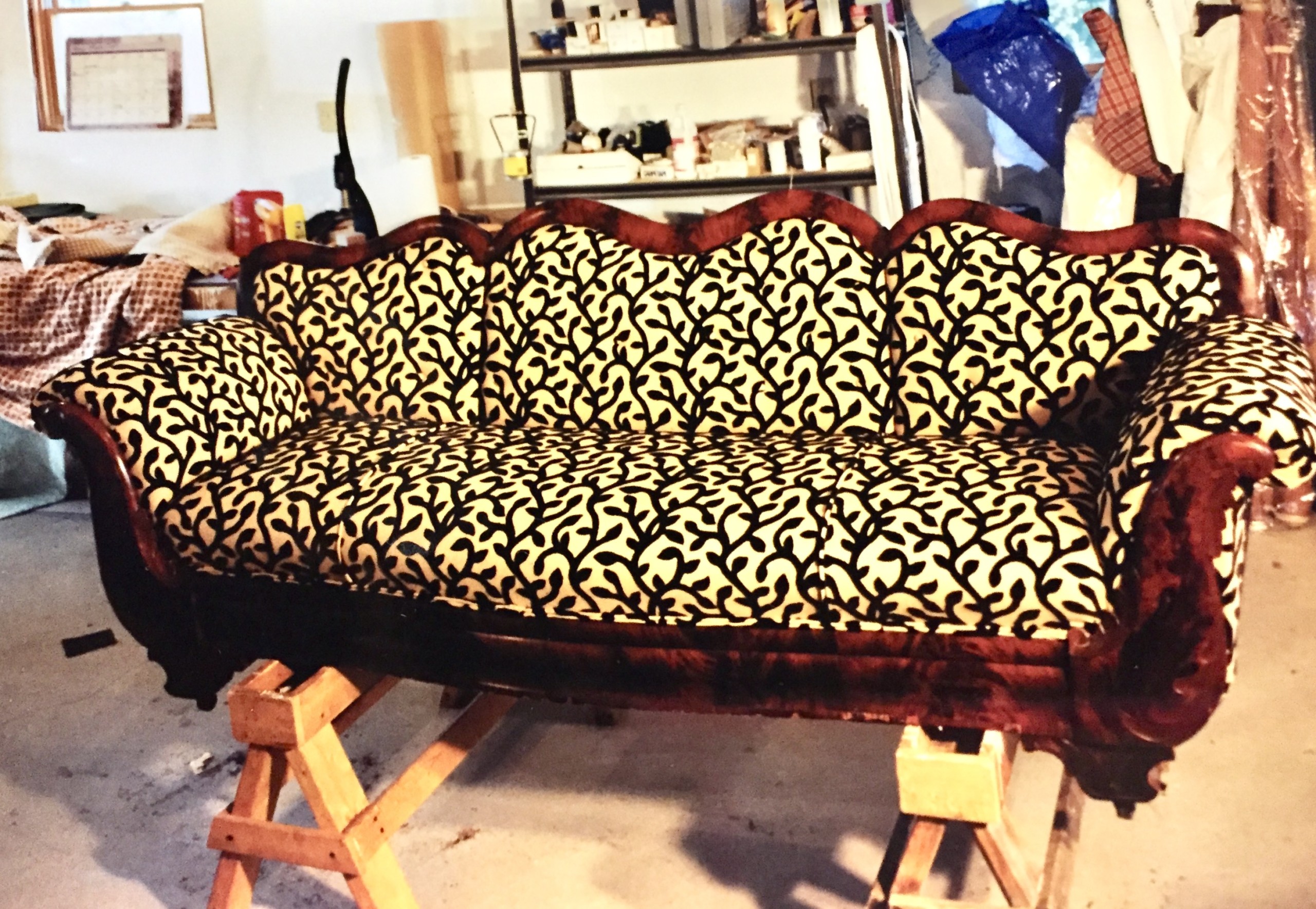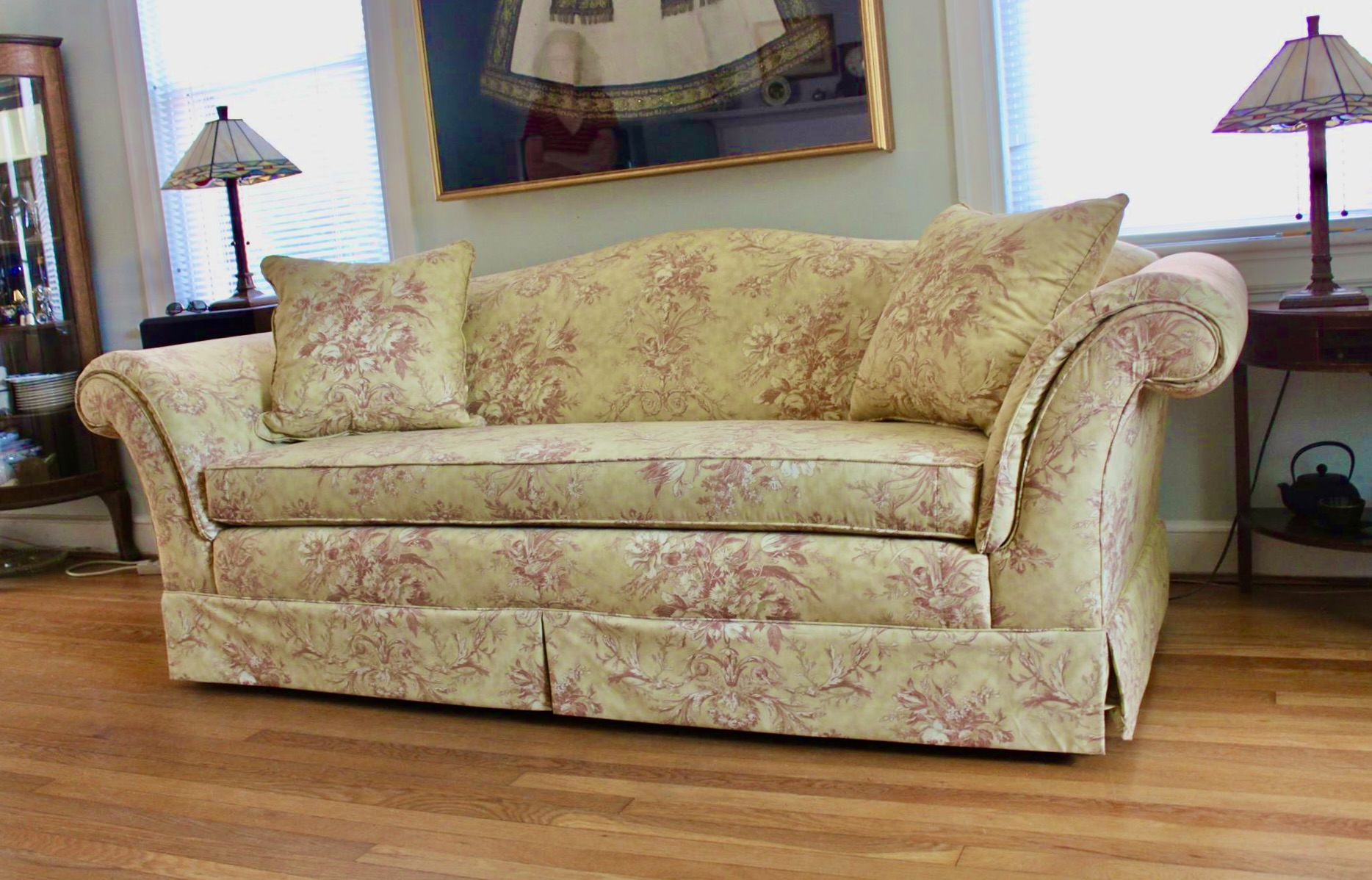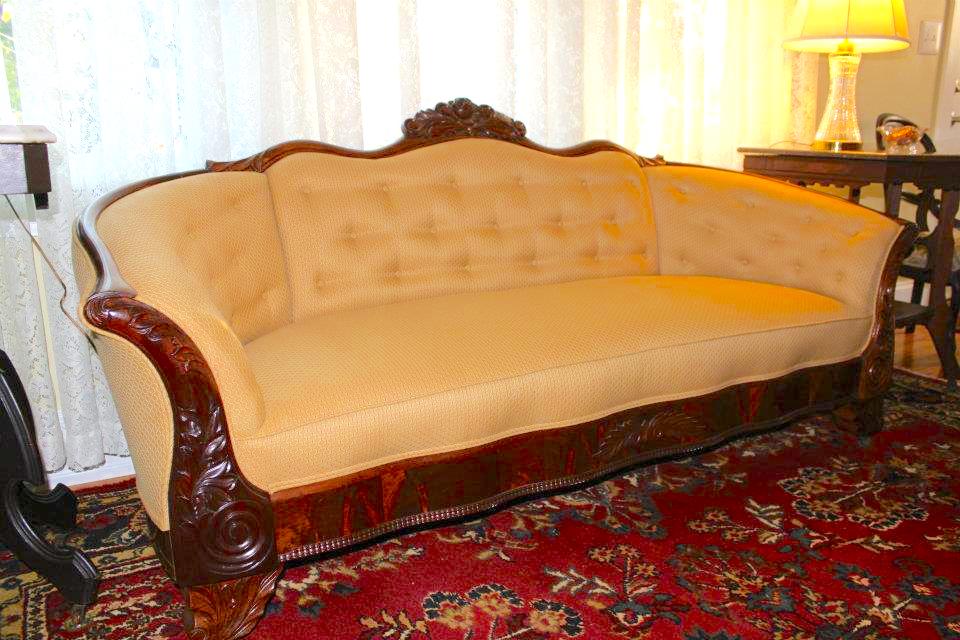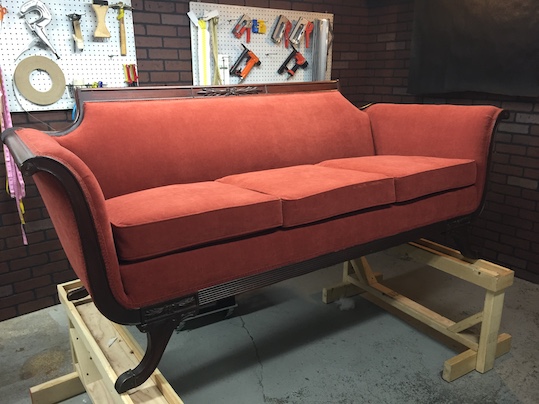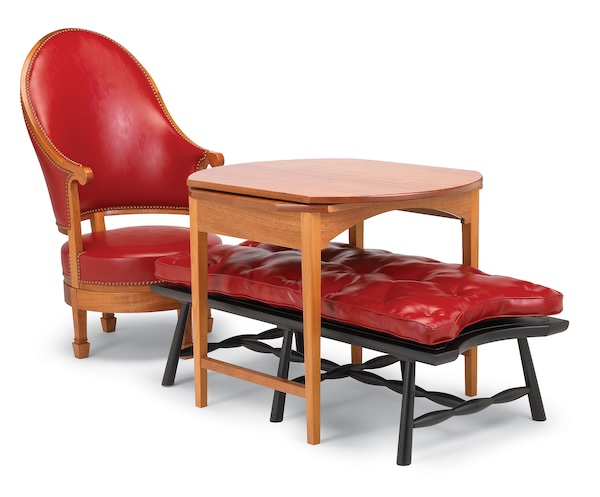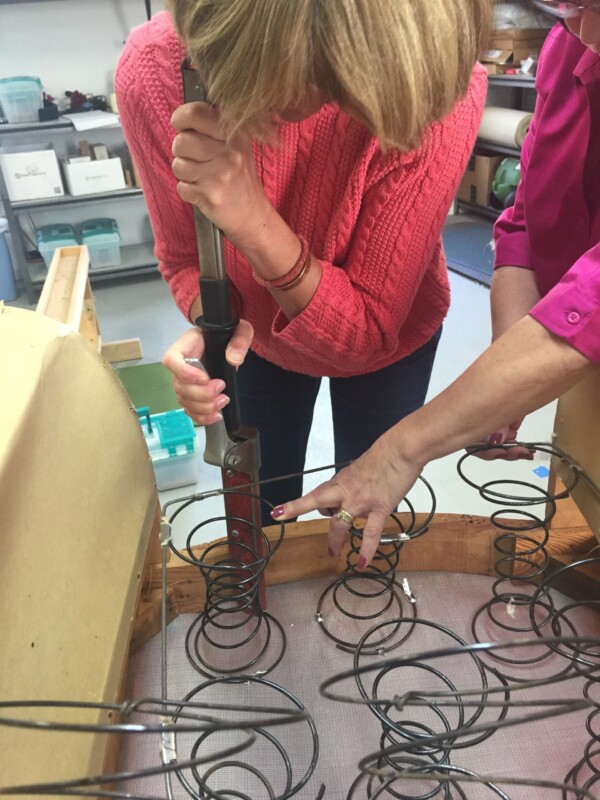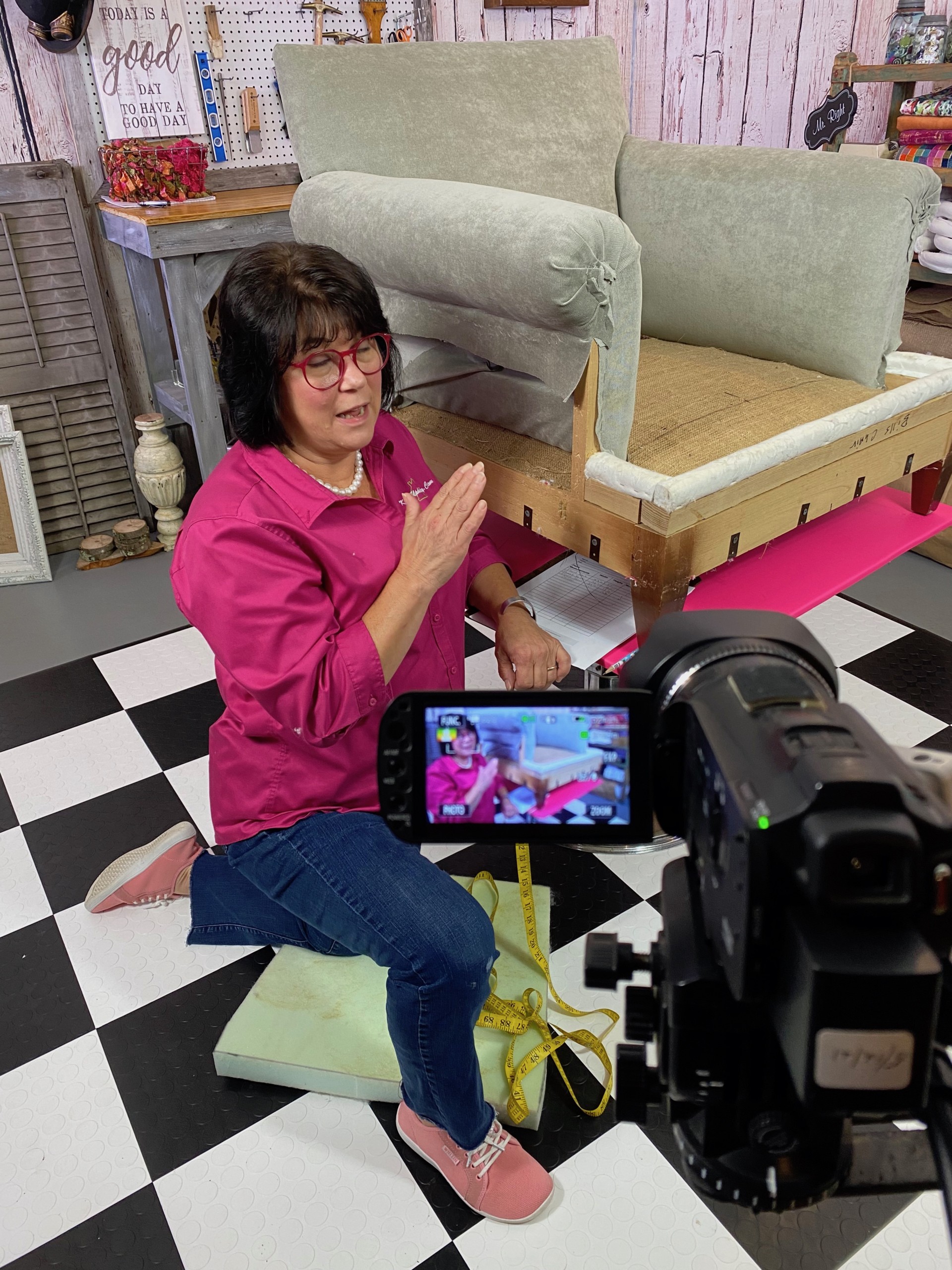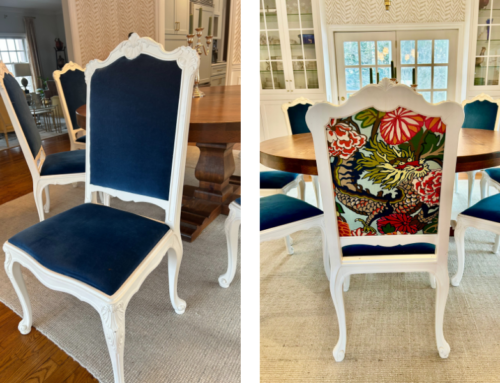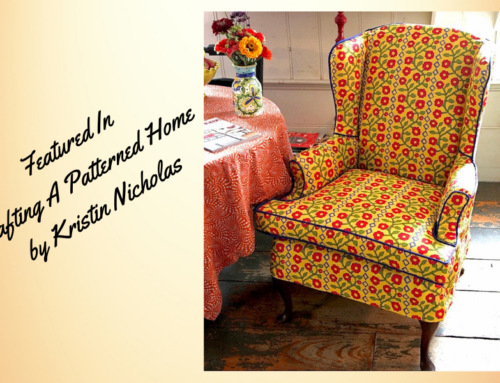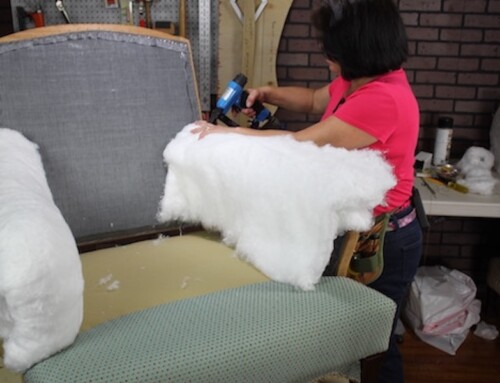“How are traditional and modern upholstery methods different?
This is a frequent question that our members ask during our weekly live chat. Let’s say I inherited Great Aunt Edna’s chair from 1930. Shall I upholster it using traditional methods and materials like those used by upholsterers in 1930, or shall I use modern methods? The answer to that question is “it depends.”
What are Modern Upholstery Methods and Materials?
Modern Upholstery Methods
Modern methods can be a combination of traditional upholstery techniques and modern upholstery techniques. We still use traditional methods in the art of spring tying today. (VIDEO) Nothing improves comfort and durability like it, so we still use it today. Yes, to tying springs on Aunt Edna’s chair much like our ancestors did.
Hand stitching is another place where you can see traditional upholstery methods. Though there is a place for hand stitching in modern upholstery, the bulk of upholstery today is machine-stitched. An industrial sewing machine has a more consistent stitch length and a cleaner outcome. It’s also much faster than hand sewing. Can you imagine hand sewing yards and yards of cording? And zippers! They weren’t commonly used until the 1920s-1930s. Cushions were hand-stitched shut before 1930. Zippers sure make stuffing cushions a lot easier!
“Spitting tacks” is a term used to describe a technique where the upholsterer holds tacks in their mouth and “spits them” onto a magnetic tack hammer as needed while attaching jute or fabric with a tack hammer. Though I learned to spit tacks, and some upholsterers still spit tacks, most upholsterers today use a pneumatic staple gun. (one too many fat lips from tacks convinced me to make the switch) Staples do less damage to a furniture frame (and your teeth) than tacks, and they’re quicker and more efficient! Tacks leave large holes. Staples don’t. If Great Aunt Edna’s chair has been upholstered several times using tacks, it’s likely the wooden frame is pretty chewed up. In the case of Aunt Edna’s chair, I may have to fill and repair some tack holes before I can use staples.
The use of staples may make it possible to reupholster a vintage chair. If we were limited to using tacks, some pieces become irreparable over time due to frame damage from repeated upholstery. Modern methods can give new life to furniture that may be too chewed up to upholster one more time using tacks.
Modern Upholstery Materials
If I’m upholstering Great Aunt Edna’s chair from the early 20th century, I might find animal hair, cotton wadding, feathers or down, old grain sacks, and pressboard from crackers or cereal boxes. I once saw part of a quilt and nightgowns used for cushion padding in an old chair. I can’t imagine those items creating the comfort we’ve become accustomed to today. Do you think they’d use old clothes if they had other options?
Modern materials include pre-cut, cardboard tack strips, metal tack strips, curve-ease, natural and synthetic cotton, bonded polyester fiber, high-density foams, and modern threads. Modern materials include eco-friendly options like natural latex, kapok, wool, down, and organic cotton. High-density foam gives better support, durability, and comfort than some traditional stuffings used 100 years ago. Today, Some cushions marry old and new fills using a high-density foam with a down cushion wrap. Modern materials, like modern methods, give us a broader set of options for how the furniture looks and feels. We have lots of options!
Modern Fabrics
Modern fabrics can be natural, synthetic, or blended. They include options for stain resistance, water resistance, microfiber, performance, recycled, and outdoor fabrics. We have options for a wide variety of threads of varied tensile strength, which we didn’t have 100 years ago.
Traditional Upholstery Restoration
Today, you will likely see traditional upholstery methods used in historic restoration. Think about great historical houses. (e.g., The White House, Biltmore, or Monticello). If I had to restore Thomas Jefferson’s chair, I’d want it to be as historically accurate and authentic as possible. I might wash and reuse the fillings to make it historically correct. Perhaps a restorer had leather specially tanned in a historically accurate way to restore Jefferson’s chair perfectly. Once Jefferson’s chair is restored, no one will likely sit on it again. It is no longer furniture. It is a historical artifact. How do I want Aunt Edna’s chair to be used? As furniture or an artifact?
Upholstering for Our Families
Great Aunt Edna’s chair has some sentimental value to your family. You may want to pass her chair to the next generation and want it to be a piece your family loves and uses. Most importantly, you want the chair to be comfortable and durable for today’s lifestyle. Modern upholstery methods will give you just that.
Why I Teach Modern Upholstery Methods
I choose to teach you modern methods in our membership and workshops because they are common practice today. The old way of doing something isn’t necessarily the best. Modern materials give us the comfort that we have become accustomed to. Traditional upholstered pieces weren’t meant to lounge in for comfort. Today, we want to sit with our families for movie night, game night, and family gatherings. This makes comfort a necessity!
If you’re curious about historical methods, a classic book that might help you is Practical Upholstering: A Complete Handbook for the Upholsterer © 1946 by John W. Stephenson. This rare book, which some of our members have been able to find at used bookstores or on eBay, is filled with vintage line drawings and descriptions of historical techniques. (Sorry, no instructional videos back then!)
There is a place for traditional and modern upholstery methods in our world. We need both kinds of upholsterers. I’d love to visit a historical upholstery or restoration workroom someday, but I will stick with modern methods for Aunt Edna’s chair. How about you?


